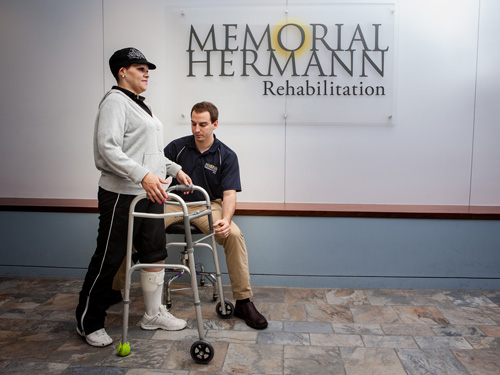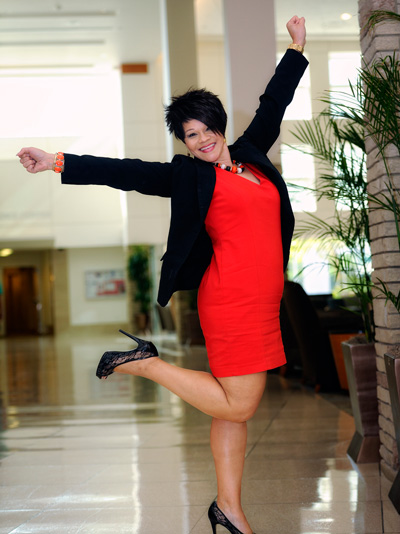It was a year and a month before Benita “B.J.” Atkinson slipped her feet back into her trademark 5-inch stilettos after suffering an ischemic stroke while on vacation in New Orleans. Rushed to Tulane Medical Center on July 7, 2013, the 40-year-old was administered tPA and tucked into intensive care for the next five days.

Admitted to Memorial Hermann Rehabilitation Hospital-Katy with aphasia and left-side hemiparesis, Atkinson went right to work under the direction of physical medicine and rehabilitation specialist Danique van Dongen, MD, medical director of the hospital. When the 5’3” patient was asked by her therapy team to identify her rehabilitation goal, she asked them to write on the white board in her room: “My goal is to wear 5-inch heels again.” When someone suggested she focus on walking first, her answer was characteristically B.J. “You don’t understand. Walking is the process to get to the goal. The goal stays the same: I want to wear 5-inch heels. I’m not used to being flat on the ground, and I have a reputation to keep up at work.”
While therapy was strenuous, Atkinson says she found inspiration in every corner of the hospital. “The therapists make you want to work hard and compete with yourself to beat your goals. The patient care assistants I saw first thing every morning made me excited to get up, which at first is a huge burden because you can’t help yourself. They encourage you and get you down to breakfast, where the cafeteria staff greets you and makes you feel welcome. As a patient, I found support everywhere.”
After a month of inpatient therapy, Atkinson was discharged and began outpatient therapy at the hospital. Her concerns about switching from one therapy team to another evaporated when she saw how smoothly she was transferred from one group to the other.

Among her outpatient therapists was Todd Klekar, PT, DPT, NCS, whom she remembers as an innovative and outside-the-box thinker. “With Todd’s help, I went from the wheelchair to using a walker on the Bioness L300, to the Bioness alone, to walking independently,” she says. She accomplished this in a five-month period between August and December 2013.
“In August, Benita couldn’t walk without assistance. By the time she completed her therapy program in December, she was walking 1,200 feet in six minutes independently without any assistive device or adaptive technology,” says Klekar, who is writing a case study on Atkinson’s functional recovery for submission to the American Physical Therapy Association’s Combined Sections Meeting. “When I asked her to come back last July for a follow-up for the case study, she could walk 2,252 feet over that same six-minute time period. In my experience, that’s incredible. She was extremely motivated and was not going to be defeated by her stroke. Her outcomes are beyond those of anyone I’ve ever worked with, which is why I’m doing the case study. I want to take what I learned from her and use it to help other patients improve their outcomes.”
Atkinson is on the cover of the brochure that details the inpatient and outpatient therapy programs at Memorial Hermann Rehabilitation Hospital-Katy. Sometimes she’s called upon to visit patients in the ICU who need encouragement to start therapy. “Who better to tell a patient about stroke recovery than someone who’s gone through it?” she asks. “I take the brochure and tell them, ‘This was me.’ I can’t promise they’ll come out like I did. I still have some deficits – I can’t open a jar or use a can opener – but I’m back at work, wearing my 5-inch heels. You have to learn how to use your body all over again. You’ve got to be ready to work. Your mind has been attacked and it’s up to you to regain the ground you lost. There are lots of reasons to keep going. Independence is worth fighting for.”
